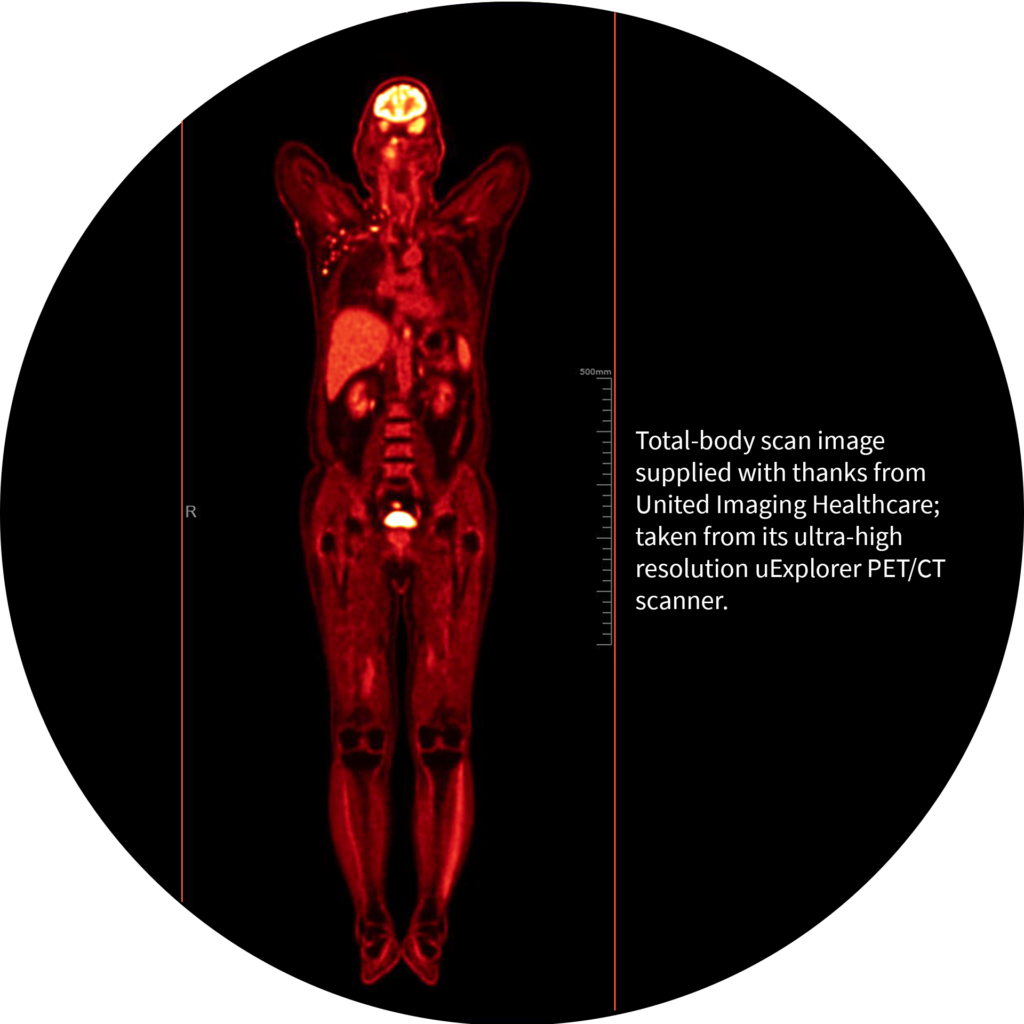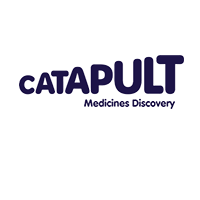Multiplexing
Multiplexing is a technique that allows for the simultaneous imaging of multiple biological processes using different radiotracers. This is achieved by using radiotracers that emit photons of different energies, which can then be distinguished by the PET scanner. This allows for the creation of separate images for each radiotracer, and simultaneous imaging of multiple biological systems providing a comprehensive understanding of the body’s physiology.
Single Scan Efficiency
Total-body PET scanning offers a notable improvement in scan capacity and sensitivity compared to the conventional PET imaging, using a series of bed positions. A single total-body PET scan can comprehensively acquire data from the entire body during a single session in near-real time, leading to substantial reductions in both time and resource consumption that would otherwise be expended on multiple scans.
Accurate Staging and Assessment
Total-body PET plays a pivotal role in enhancing the precision of disease staging and evaluation by affording a comprehensive perspective on intricate disease advancement. This advanced imaging technique enables medical practitioners to more effectively gauge the full scope of disease progression, encompassing conditions that affect multiple organ systems, such as cancer and inflammatory diseases.
Monitoring Treatment Progress
Total-body PET extrapolates a more physiological characterisation means of tracking the response to treatment across the entirety of the body. This enables doctors to evaluate the efficacy of treatments comprehensively and at an early timepoint and make requisite adaptations as needed.
Research and Personalisation
Total-body PET holds significant promise in the realm of scientific research for the advancement of predictive therapeutic indices and precision medicine. Its applications extend to drug development research, encompassing the monitoring of pharmacokinetics and pharmacodynamic properties of medications. Furthermore, total-body PET contributes to the development of personalised medicine paradigms, allowing treatments to be finely tailored based on individual patient conditions.
Early Diagnosis
The capacity to conduct whole-body scans has the potential to expedite the early detection of diseases, including cancers, heart disease, and neurological disorders, prior to the onset of symptoms or extensive progression.











